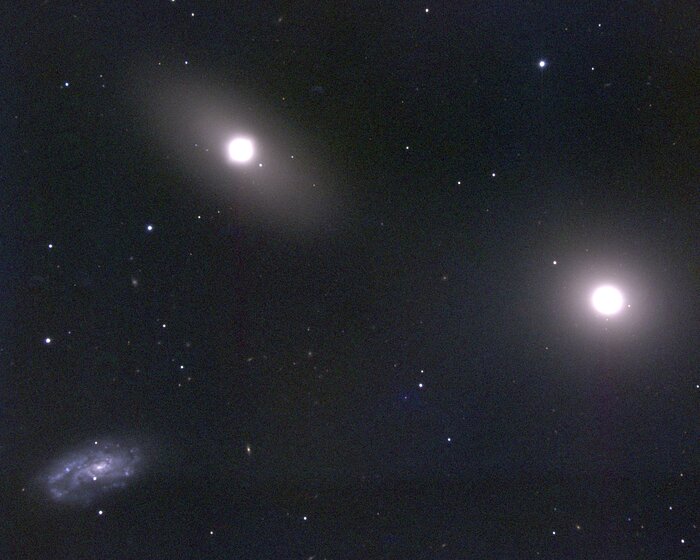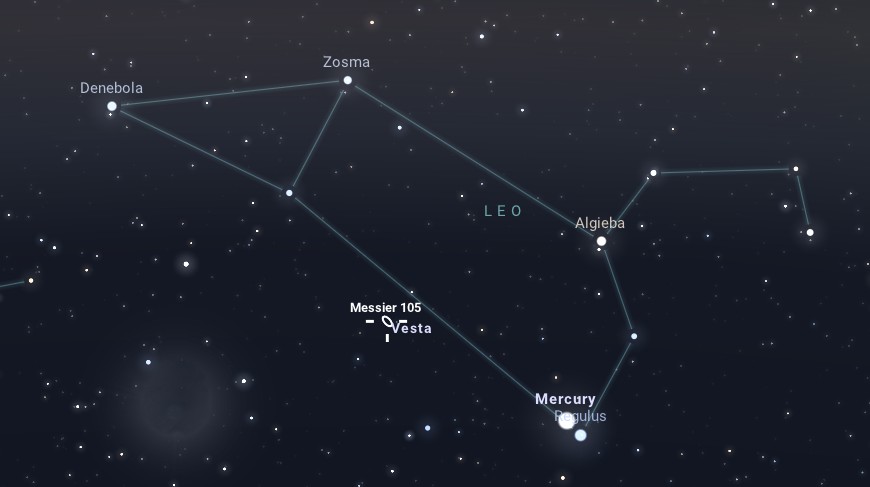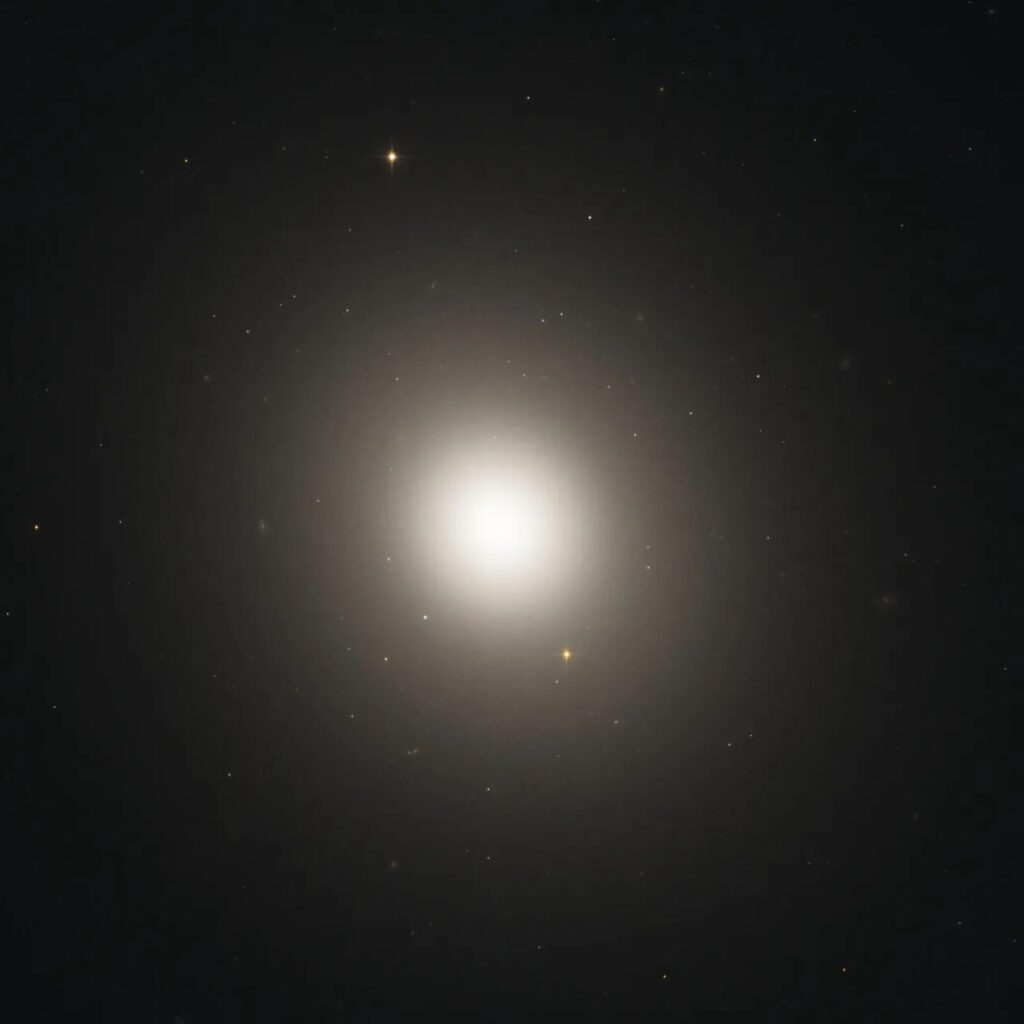M105 is an elliptical galaxy located in the equatorial constellation Leo. It was discovered by Pierre Méchain in March 1781 and later included in Charles Messier’s catalog of comet-like objects.
The galaxy is part of the Leo I Group of galaxies, which includes several other galaxies that are gravitationally bound together. It is situated at a distance of approximately 32 million light-years from Earth and spans about 50,000 light-years in diameter.
Structure and Appearence
Visually, M105 appears as a relatively bright, elliptical-shaped galaxy with a bright central core surrounded by a smooth halo of stars. Unlike spiral galaxies that exhibit prominent arms and disk structures, elliptical galaxies like M105 are characterized by their lack of distinct features and their overall ellipsoidal shape. The stars in elliptical galaxies typically have random orbits rather than following a defined disk-like rotation.
The central region of M105 hosts an older stellar population, dominated by red and yellow stars. These stars are generally cooler and older than those found in spiral galaxies, indicating that the galaxy has experienced little recent star formation activity. The lack of significant ongoing star formation suggests that M105 has used up much of its interstellar gas reservoirs (including hydrogen), which is common for elliptical galaxies that have transitioned from active star-forming phases to a more quiescent state.
Black Hole
M105 is known to harbor a supermassive black hole, as is typical for most large galaxies. The exact mass of the black hole hasn’t been precisely measured, but it is inferred to have a significant mass, likely in the range of millions to tens of millions of times the mass of our Sun. This supermassive black hole resides at the galaxy’s nucleus and is inferred from the movements of stars and gas around it, as well as the detection of high-energy emissions characteristic of active galactic nuclei (AGN).

Galactic Interactions
M105 is often studied alongside its neighbouring galaxies within the Leo I Group, which includes M96 and M65. The interactions and gravitational influences between these galaxies provide insights into their formation and evolution within the group’s dynamic environment. Studies of M105’s stellar population and dynamics contribute to our understanding of the processes that shape galaxies over cosmic timescales, including mergers, interactions, and the role of environment in galaxy evolution.
Observation
M105 has an apparent visual magnitude of approximately 9.3, making it visible through moderate-sized telescopes under good viewing conditions. The optimal period for observing the galaxy in both Northern and Southern Hemispheres is from February to May, when the constellation Leo is positioned high in the night sky.
Observing from a location with minimal light pollution will significantly enhance your ability to see the galaxy and its details. Choose nights with minimal cloud cover and low humidity for the best visibility.
To find the galaxy, look for the star Regulus, which is the brightest star in Leo and marks the lions heart, and Denebola, which marks the tail. Between these stars and slightly to the west, you will find a triangle of galaxies. Look for a small, roughly equilateral triangle where these galaxies reside. M105 is located slightly north of M96.




